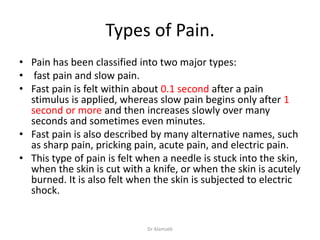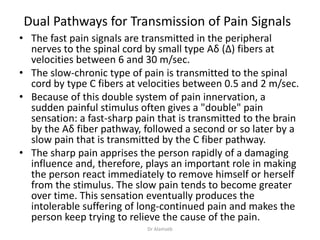The document discusses pain as a protective mechanism that responds to tissue damage, emphasizing the types of pain: fast pain and slow pain, each with distinct characteristics and transmission pathways. Fast pain occurs rapidly and is linked to acute stimuli, while slow pain develops later and is often related to chronic conditions, with pain receptors showing little adaptation. It also describes tissue ischemia and muscle spasms as causes of pain, alongside details about neural pathways responsible for transmitting pain signals to the brain.
















